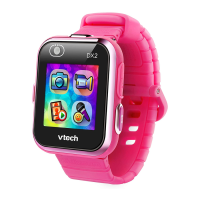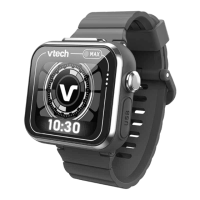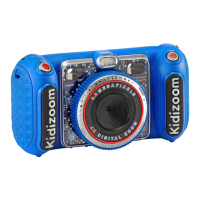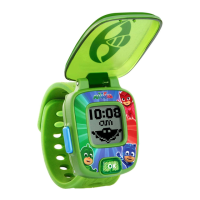4. Pull out the battery pack until both the positive and negative wires are detached from the
product.
Note: Do not cut the wires simultaneously with scissors, pointed objects or any other electrical
conductors.
5. After the battery has been taken out, make sure it is handled and disposed of properly.
Important note:
Do not pierce the battery pack with any sharp objects.
Do not allow any wires left attached to the battery to touch each other.
Do not touch ends of wires attached to the battery with any other electrical conductors.
Do not expose the battery to direct sunlight or high temperatures.
Do not handle a damaged Li-ion polymer battery.
DISCLAIMER AND LIMITATION OF LIABILITY
VTech ® Electronics North America, L.L.C. and its suppliers assume no responsibility for any
damage or loss resulting from the use of this handbook. VTech ® Electronics North America, L.L.C.
and its suppliers assume no responsibility for any loss or claims by third parties that may arise
through the use of this product. VTech ® Electronics North America, L.L.C. and its suppliers
assume no responsibility for any damage or loss caused by deletion of data as a result of
malfunction, dead battery, or repairs.
Company: VTech ® Electronics North America, L.L.C.
Address: 1156 W. Shure Drive, Suite 200, Arlington Heights, IL 60004 USA
Phone: 1-800-521-2010 in the U.S. or 1-877-352-8697 in Canada
IMPORTANT NOTE:
Creating and developing VTech ® products is accompanied by a responsibility that we at VTech ®
take very seriously. We make every effort to ensure the accuracy of the information which forms
the value of our products. However, errors sometimes can occur. It is important for you to know
that we stand behind our products and encourage you to call our Consumer Services Department
at 1-800-521-2010 in the U.S., or 1-877-352-8697 in Canada with any problems and/or suggestions
that you might have. A service representative will be happy to help you.
Note:
This equipment has been tested and found to comply with the limits for a Class B digital device,
pursuant to Part 15 of the FCC Rules. These limits are designed to provide reasonable protection
against harmful interference in a residential installation. This equipment generates, uses and can
radiate radio frequency energy and, if not installed and used in accordance with the instructions,
may cause harmful interference to radio communications. However, there is no guarantee that
interference will not occur in a particular installation. If this equipment does cause harmful
interference to radio or television reception, which can be determined by turning the equipment
off and on, the user is encouraged to try to correct the interference by one or more of the
following measures:
Reorient or relocate the receiving antenna.
Increase the separation between the equipment and receiver.
Connect the equipment into an outlet on a circuit different from that to which the receiver is
connected.

